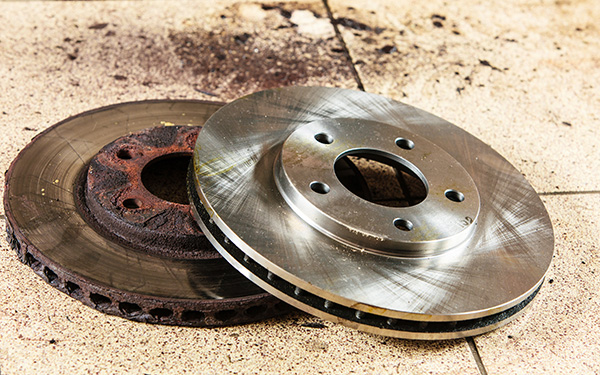
When it comes to vehicle safety, the brake system plays a critical role, and one of the essential components is the brake rotors. If you've ever felt a pulsating sensation when you press the brake pedal, chances are you might be dealing with warped brake rotors. But what exactly causes this issue? And more importantly, how can you avoid it?
Brake rotor warping isn’t as straightforward as the metal physically bending out of shape. Instead, it's a result of uneven wear on the rotor’s surface, caused by excessive heat, uneven pressure, or other factors. Understanding these causes can help you take steps to maintain your vehicle's performance and ensure your brakes are always functioning at their best.
Excessive Heat
One of the most common reasons for warped brake rotors is excessive heat. Every time you apply your brakes, the friction between the brake pads and the rotor generates heat. If this heat isn't adequately dispersed, the rotor can experience uneven wear. Over time, these high-temperature spots can create ridges and valleys on the rotor’s surface, leading to the pulsating sensation you feel when braking.
Aggressive driving habits, such as frequent hard braking or braking downhill without letting the vehicle cool off, can accelerate this process. The heat buildup can reach temperatures where the rotor is no longer able to maintain its flat surface, and this warping effect starts to occur.
To help avoid this, practice gradual and controlled braking, especially during long downhill descents. Giving your vehicle a chance to cool down between heavy braking events can extend the life of your rotors.
Uneven Torque on Lug Nuts
Another major cause of warped rotors is improper wheel installation. When your vehicle's wheels are mounted, the lug nuts need to be tightened in a specific pattern and to a precise torque specification. If one lug nut is tightened more than the others, it can create uneven pressure on the rotor.
This uneven distribution of pressure causes the rotor to deform slightly, leading to the warping effect. It might not be noticeable right away, but over time, the misalignment can lead to significant braking issues.
To avoid this, make sure that the lug nuts are tightened using a torque wrench by a professional who follows the manufacturer’s recommended specifications. This simple step can go a long way in preventing unnecessary wear on your brake rotors.
Worn Brake Pads and Rotor Damage
Worn-out brake pads can also be a hidden culprit behind warped rotors. When brake pads wear unevenly or become too thin, they may not make even contact with the rotor’s surface. This uneven pressure during braking can result in sections of the rotor heating up faster than others, leading to warping.
Оld brake pads may leave behind deposits of brake material on the rotor, which can create an uneven surface. This not only compromises braking performance but also accelerates the process of rotor warping.
Regular brake inspections and replacing your brake pads when they’re nearing the end of their lifespan can prevent this issue. High-quality brake pads that are suited to your driving habits are essential in maintaining even wear on your rotors.
Heavy Vehicle Loads and Towing
If you regularly haul heavy loads or tow trailers, your brake system is under increased stress. The extra weight places more demand on your brakes to stop the vehicle, causing the rotors to generate more heat than usual. This added strain increases the likelihood of uneven wear and rotor warping.
To prevent this, consider upgrading to performance rotors and brake pads designed for heavy-duty applications. These components are specifically built to withstand higher temperatures and the increased demands of towing or heavy cargo, reducing the risk of heat-related warping.
Poor Brake Cooling Systems
Your vehicle’s brake system is designed to dissipate heat, but if there's a problem with the cooling mechanism, the excess heat generated during braking can lead to warped rotors. Driving in hot climates or regularly navigating rough terrain can also contribute to this issue. Over time, the inability of the rotors to cool down properly leads to uneven wear.
Ensuring that your vehicle’s cooling system is functioning correctly is vital to the health of your brake rotors. Make sure to inspect the air ducts and vents designed to cool the brakes during regular maintenance checks. If any part of the system isn’t functioning as it should, have it addressed before it leads to more significant problems.
Concerned about brake performance? At B&C Auto Center, we offer complete brake system inspections and repairs to keep you safe on the road. Book your appointment now!